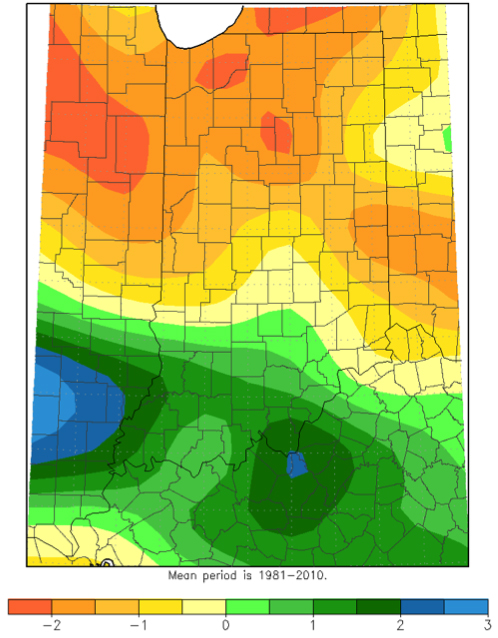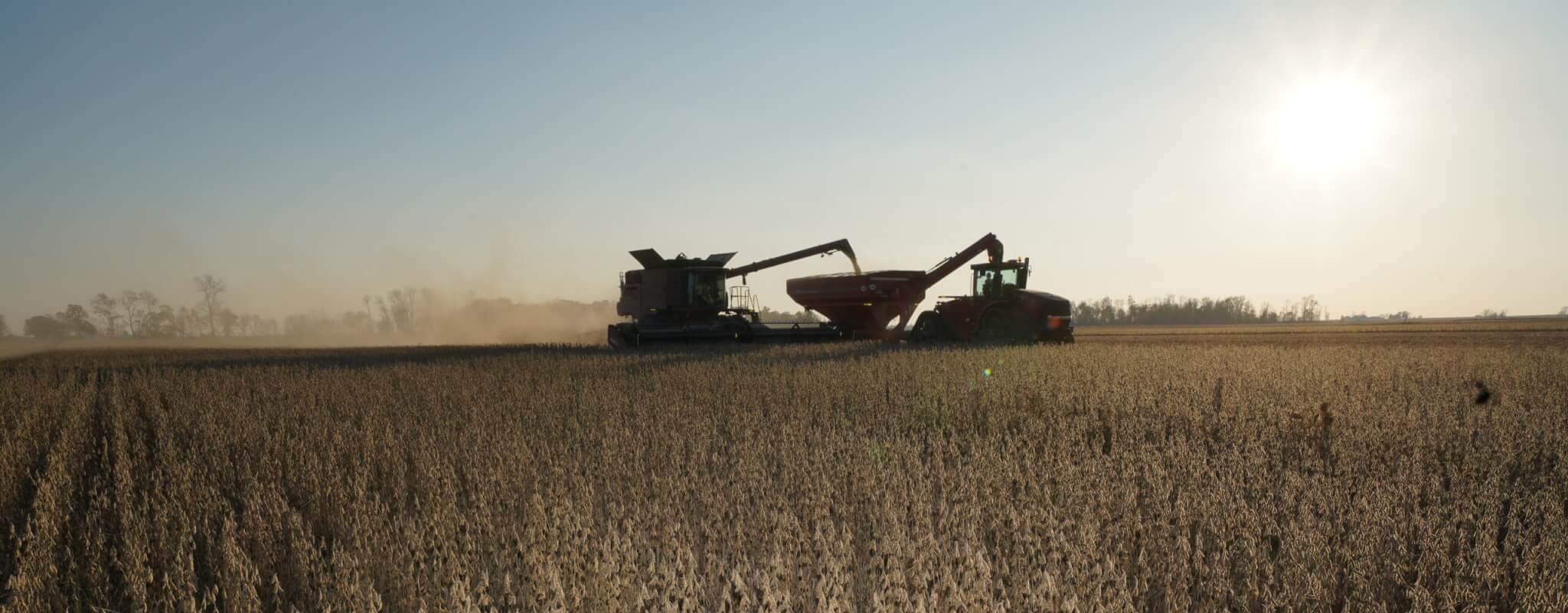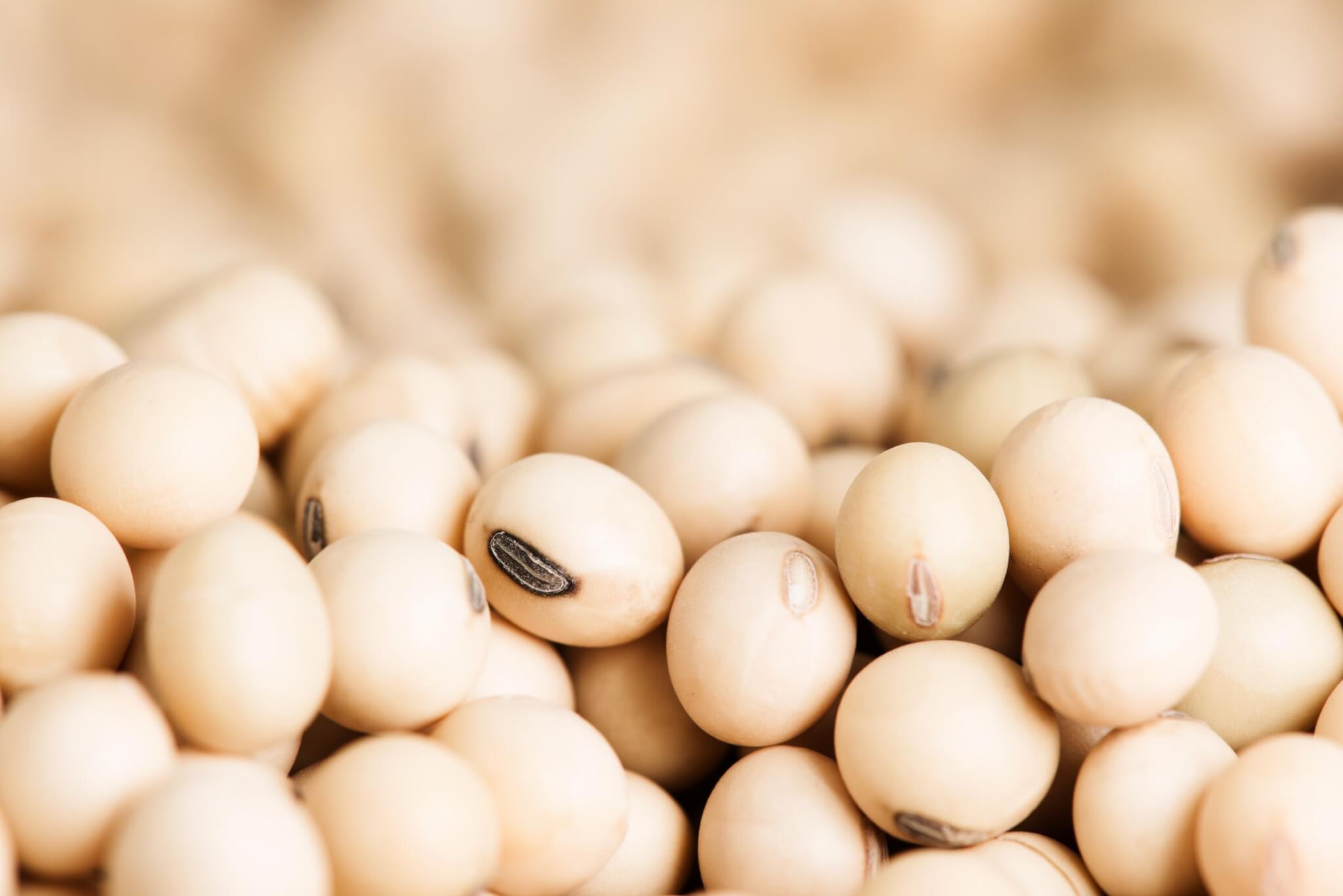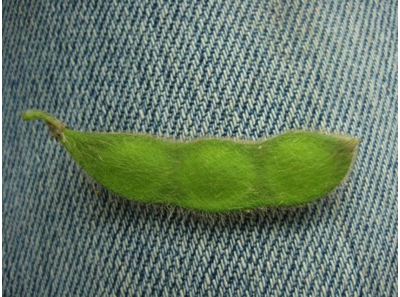Temperature Effects for Soybean Reproduction
This growing season has been anything, but normal or perhaps, that is normal. The abnormally cool temperatures have been the characterizing feature until the past few days. The average temperatures in July were 4 to 6°F cooler than normal with pockets that were 6 to 8°F below normal across Indiana and Illinois. The northern half of Indiana averaged 66 to 70°F in July while the southern half averaged a couple degrees warmer (Fig. 1). We personally enjoyed this cooler weather, but questions arise regarding the effects to our crops. Corn tends to respond more favorable to warm day and cool nights (overall growth and development, pollination, etc.) than soybean.
Soybeans like it warmer in the evening so that it can “burn” (respire) the stored energy (photosynthates that are stored as starch) and grow. If the stored energy is not burned one night, it will be left in the tank for the following day. Then, the tank is already partially filled (inhibition feedback to photosynthesis) so soybean may not fully utilize the new day’s supply of sunlight. A few days of this pattern is not detrimental, but it will eventually compound if the pattern persists. In other words, leaf/node development could be delayed, pod production limited, and seed fill is slowed due to low photosynthate production.
Nightly temperatures have dipped into the 50s frequently in July and August with even several nights in the mid-40s over the past few weeks. In some cases, the cooler weather has been a bit of a saving grace due to limited rainfall over the past 30 days, especially in the northern third of Indiana (Fig. 2).
 Figure 1 - July 2014 average temperature (°F) across the Midwest (HPRCC, 2014)
Figure 1 - July 2014 average temperature (°F) across the Midwest (HPRCC, 2014)  Figure 2 - July 2014 average temperature (°F) across the Indiana (HPRCC, 2014)
Figure 2 - July 2014 average temperature (°F) across the Indiana (HPRCC, 2014) It is difficult to predict the yield impact of the cooler temperatures over the past several weeks, because of the ability of soybean to compensate among pods and seed size. However, some studies have provided insight to the response of soybean to various temperatures near reproductive development.
A chilling treatment of 50°F (constant temperature) for one week during early reproduction stages reduced pod production by increasing abortion of flowers (Musser et al, 1983). Pollen malformation, reduced pollen production, and sterility of pollen are some of the potential causes of the loss of flowers following the chilling treatment. The recovery of soybean to develop flowers was not affected by the cool temperatures when imposed early in reproduction.
Soybeans were able to recover a larger portion of their photosynthetic capacity when the cool temperatures (2 or 3 nights of 41°F) occurred at R2 (full bloom) compared to R6 (full pod) (Purcell et al., 1987). The greater recovery rate was most likely linked to more nutrient reserves in the leaves at R2. Nutrients were remobilizing from leaves to pods and seeds at R6, and thus, leaf nutrient reserves were low. In Egli and Warlaw (1980) study, normal temperatures were maintained until R5.5 then various temperature treatments were imposed until R8 (maturity). Seed fill was lowest for the cool temperature regime (64°F during day and 55°F during night), which also resulted in the smallest seeds and delayed maturity. The greatest seed growth rate was under 80/72°F regime with good seed sizes and no delay in maturity.
As previously mentioned, the cascading effects of cool temperatures on photosynthetic capacity would certainly influence the rates of pod elongation and seed fill. Slow growth rates can start to become an issue as we progress to autumn with shorter and shorter days (and temperatures continue to decrease). The past week has been much warmer with a supply of water. Soybeans will respond to the shift in weather with more emphasis on growth of pods and seeds than development of new flowers or pods. Again, soybean can compensate for the shortcomings that occurred in many fields during early to mid-reproduction provided the warmer weather continues and the soils have water to supply. Extended periods of cool temperatures during late stages of development (R5 to R6) will certainly influence seed fill and most likely yield.
References
HPRCC 2014. Midwest average temperatures for July 1 to 31, 2014.
https://hprcc.unl.edu/products/maps/acis/Jul14PDataUS.png
Musser, R.L., S.A. Thomas, J.F. Thomas, and P.J. Kramer. 1983. Effects of shoot chilling during floral initiation and development of “Ransom” soybeans. Plant Physiol. Suppl. 72:43.
Purcell, L.C., D.A. Ashley, and H.R. Boerma. 1987. Effects of chilling on photosynthetic capacity, leaf carbohydrate, and nitrogen status of soybean. Crop Sci, 27:90-95.
Egli, D.B. and I.F. Wardlaw. 1980. Temperature response of seed growth characteristics of soybeans. Agron. J. 72:560-564.





